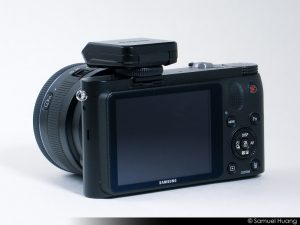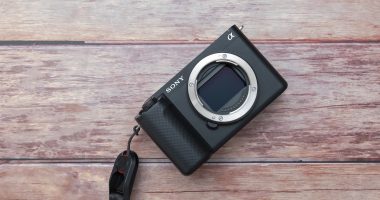 Samsung lately has been very aggressive when it comes to their digital camera line. In the last few months, they’ve released quite a few new products and have updated their entire line with Wi-Fi capabilities and SMART features. Samsung even caters to the higher end consumer market with their NX series of interchangeable lens cameras. I’ve had experiences with Samsung’s point-and-shoot offerings but never with their NX line of cameras, until now that is. Samsung finally has some units for me to check out and the first NX series camera on the list is the NX1000. The NX1000 is Samsung’s entry level interchangeable lens camera that acts as a stepping stone for those who have only had experiences with point-and-shoots but want something more powerful with more control over your shots.
Samsung lately has been very aggressive when it comes to their digital camera line. In the last few months, they’ve released quite a few new products and have updated their entire line with Wi-Fi capabilities and SMART features. Samsung even caters to the higher end consumer market with their NX series of interchangeable lens cameras. I’ve had experiences with Samsung’s point-and-shoot offerings but never with their NX line of cameras, until now that is. Samsung finally has some units for me to check out and the first NX series camera on the list is the NX1000. The NX1000 is Samsung’s entry level interchangeable lens camera that acts as a stepping stone for those who have only had experiences with point-and-shoots but want something more powerful with more control over your shots.
I’m doing something a bit different with this review. Usually, I have a hands-on preview post that comes before the main review, but due to time constraints, I am combining both into one giant review. Again, like with my previous reviews, I won’t be going too in-depth into specs and will be gearing this review more towards the average consumer who just wants to know whether or not the camera takes good photos and has useful features.
Body & Design
Let’s start this off by saying that the NX1000 shares a lot of physical features with other Samsung point-and-shoots. The body has the familiar curved rectangular shape, but has a very prominent had grip. In fact, if you look at the NX1000, it does share a few similarities to Sony’s NEX line of cameras at a glance. If it weren’t for all the Samsung logos on the camera, you’d think it was a Sony. Ergonomically, it fells really good in your hands. The grip really helps a lot with comfort and one-handed operation. On the down side, the body is very plastic feeling. Most of the body looks like its made of plastic and the textured plastic back and grip don’t help matters. It’s supposed to look like leather but it comes off looking a bit cheap and toyish. I will say though that build quality is excellent however and even though much of it is plastic, it has a good amount of weight to it giving it a solid feel.
 The front of the camera is very simple looking, like most of the other Samsung cameras. It’s very clean and minimal with the only breaks on the surface being the many logos. Again, there is a prominent grip but it doesn’t protrude out as much as the Sony NEX-5N that I have. It is also textured to look like leather, but it’s not. It’s just plastic. On the top right corner of the grip you’ll find an AF-assist light. I’m not sure if I like the positioning of this as it seems too easy for my finger to block it if I’m holding it a certain way. The only other thing on the front of the camera is the lens mount which again, looks a bit plastic-like from the outside. This could also be because of the matte-black color, which is the one I have here. It might have a different feeling in white, but I wouldn’t know as I haven’t seen it in that color yet.
The front of the camera is very simple looking, like most of the other Samsung cameras. It’s very clean and minimal with the only breaks on the surface being the many logos. Again, there is a prominent grip but it doesn’t protrude out as much as the Sony NEX-5N that I have. It is also textured to look like leather, but it’s not. It’s just plastic. On the top right corner of the grip you’ll find an AF-assist light. I’m not sure if I like the positioning of this as it seems too easy for my finger to block it if I’m holding it a certain way. The only other thing on the front of the camera is the lens mount which again, looks a bit plastic-like from the outside. This could also be because of the matte-black color, which is the one I have here. It might have a different feeling in white, but I wouldn’t know as I haven’t seen it in that color yet.
Rotating the camera clockwise to the side, you’ll see it’s fairly sparse here except for the strap eyelet up near the top and a tiny speaker near the middle. From this angle, you can also see how far the lens mount comes out, which is a good half an inch. If you have the kit lens attached, you’ll also notice from the side view that the camera leans forward due to the weight of the lens. The Olympus PEN cameras suffer from this too so it’s not something unique to the NX1000.
 Moving to the rear of the camera, this again is where most of your time will be spent playing with the NX1000. The rear has a typical layout that will be very familiar to digital camera users. The left side houses a very sharp, 3-inch display, though not a widescreen display that we’ve seen from others. It’s also not a AMOLED screen like I’ve seen with some other Samsung cameras. To the right of the display are all the buttons and dials you’ll be using. Samsung chose to go with a control wheel layout around the main directional buttons which helps conserve space and is something I’ve seen with the Sony and Olympus cameras as well. You’ll also notice a dedicated record button which is also a welcome feature.
Moving to the rear of the camera, this again is where most of your time will be spent playing with the NX1000. The rear has a typical layout that will be very familiar to digital camera users. The left side houses a very sharp, 3-inch display, though not a widescreen display that we’ve seen from others. It’s also not a AMOLED screen like I’ve seen with some other Samsung cameras. To the right of the display are all the buttons and dials you’ll be using. Samsung chose to go with a control wheel layout around the main directional buttons which helps conserve space and is something I’ve seen with the Sony and Olympus cameras as well. You’ll also notice a dedicated record button which is also a welcome feature.
Turning the camera to side again, you’ll see a built in door semi hidden in the grip. It’s a plastic hinged door so it’s not as flimsy as those rubber doors and seems pretty solid. Underneath the door, you’ll find and HDMI port and a micro USB port.
 On the top of the NX1000, you’ll find that it’s pretty minimal up here. There is a large control dial, which I love and favor over having to select modes through the software. There is also the shutter release button which is surrounded by an on/off toggle. The last button you’ll find is the SMART Link button which is used to connect to SMART enabled devices and apps in order to transfer photos wirelessly. More on that later. The last item of interest here is that Samsung smartly chose to use a standard hotshoe instead of a proprietary one. This means that it will be able to take most current aftermarket flash units. I ended up just leaving the optional flash installed through my time with the NX1000 as I think most people may end up doing as well.
On the top of the NX1000, you’ll find that it’s pretty minimal up here. There is a large control dial, which I love and favor over having to select modes through the software. There is also the shutter release button which is surrounded by an on/off toggle. The last button you’ll find is the SMART Link button which is used to connect to SMART enabled devices and apps in order to transfer photos wirelessly. More on that later. The last item of interest here is that Samsung smartly chose to use a standard hotshoe instead of a proprietary one. This means that it will be able to take most current aftermarket flash units. I ended up just leaving the optional flash installed through my time with the NX1000 as I think most people may end up doing as well.
The bottom of the camera is pretty standard. The battery and SDHD card is located in the grip. I do like where Samsung placed the tripod mount at the center axis of the lens and not the center of the camera.
 While on the subject of the lens, the kit lens the NX1000 comes with is pretty standard and in my opinion, a bit cheap feeling. It’s mostly plastic-like, similar to the kit lens that comes on the Olympus PEN cameras and doesn’t have that quality feel to it like the NEX e-mount lenses. It however is not a bad lens and Samsung does do something very interesting with it. It has a Fn button directly embedded within the lens housing which is not something I’ve really encountered yet with other cameras. By pressing the Fn button here, you’re able to adjust specific settings using what would be the focusing ring. That means you can use it to adjust something like aperture or shutter speed by turning the ring instead of using the dial on the back of the camera. It’s an interesting feature, though it takes some time getting used to.
While on the subject of the lens, the kit lens the NX1000 comes with is pretty standard and in my opinion, a bit cheap feeling. It’s mostly plastic-like, similar to the kit lens that comes on the Olympus PEN cameras and doesn’t have that quality feel to it like the NEX e-mount lenses. It however is not a bad lens and Samsung does do something very interesting with it. It has a Fn button directly embedded within the lens housing which is not something I’ve really encountered yet with other cameras. By pressing the Fn button here, you’re able to adjust specific settings using what would be the focusing ring. That means you can use it to adjust something like aperture or shutter speed by turning the ring instead of using the dial on the back of the camera. It’s an interesting feature, though it takes some time getting used to.
Overall, the Samsung NX1000 is a smartly designed, entry level interchangeable lens camera. It may not be made of premium materials, but it is still very solid to hold and has good weight to it. I love the ergonomics of it as it is quite similar to my NEX-5N with easy to access buttons and dials. Again, I wish it used slightly higher grades of materials for the outer shell but I guess that’s to be expected from their entry level version of the NX.
Operations & Features
Operating the Samsung NX1000 is very similar to my experiences I had with the Samsung WB850F which I absolutely loved. It actually has almost the same exact layout for all the buttons except that there is no dedicated Drive Speed toggle switch and instead, that has been moved to the 4-way control dial. Other than that though, it’s exactly the same. The buttons up top are also in very similar locations, though they have different functions. If you’re coming from a Samsung point-and-shoot camera, you’ll have no trouble jumping right in and using the NX1000.
The operations of the OS is also quite similar and in Samsung’s case, they’ve really made the OS a joy to use as it is very easy to navigate and figure out what is what. I love that the NX1000 has a dedicated mode switch dial up top which means no fumbling through the menus. You get the usual P, A, S, M modes for the more advanced users as well as the SMART and Scene modes for beginners and those who just want to point-and-shoot. There is a movie mode on the dial, although you can forgo this and just press the red record button on the rear for quicker use. You’ll also notice a Wi-Fi link on the dial, but I’ll get to that later.
By now, you should know that the SMART mode is basically Samsung’s intelligent auto mode which will try to select the proper scene mode for your specific shooting situation. For the most part, it works reasonably well and does a good job of figuring out the proper scene, though I don’t always trust the choices these auto modes choose. With that said, you can manually choose the scene mode using the SCN mode on the dial. This brings up all he different preloaded scene modes that you can scroll through. This is handy if you know you’ll only need to be in a specific type of shooting situation.
Like with other Samsung cameras, the NX1000 also includes several “Magic” filters which are basically creative filters used to make your photos look more artsy. Samsung calls them Smart Filters and they include such things as vignetting, miniature mode, fish eye look, and sketch just to name a few. I find these to be quite gimmicky, although they can be fun to use every now and then, but not with all your photos. Only use these if you are just taking fun casual photos.
If you want to adjust user settings globally, just click the menu button. This brings up a tabbed user interface similar to what I’ve seen with PENTAX cameras. Everything is laid out smartly, and it’s not difficult to adjust any of the settings. There are also very helpful tips for each setting so that you know what you are adjusting. Since most people buying this camera are upgrading from a regular point-and-shoot, it’s great to see Samsung include these tips for the more advanced features for those who are accustomed to settings these manually.
While on the subject of manual controls, the NX1000 has a rather interesting, but strange way of manual focusing. Yes, you still use the focusing ring on the camera lens to focus, but it’s the onscreen display which is different. Unlike most cameras that offer something like a magnified view of what you are seeing so you can focus more precisely or the the use of focus peaking which highlights areas in focus, the NX1000 uses a graph method which I have no seen before. What it does is it shows you this little green line on the left of the screen. Point at an object and the line will go up and down depending on if it is in focus or not. The more in focus it is, the higher the line gets. The less in focus, the lower the line gets. Basically you have to keep your eye on the line and where the highest point it reaches is at because that is where it’s in focus. It’s not as elegant a method as focus peaking, nor is it fast in any way, but it does work.
Wi-Fi Image Sharing
Now we can talk about the SMART portion of the NX1000. Samsung uses this name for all their cameras that include Wi-Fi sharing capabilities. It’s not just simple Wi-Fi sharing either. Samsung’s SMART system allows you to directly share images via email, to your smartphone, your TV, and even to popular social networks.
There is an accompanying Samsung MobileLink app that you can download from the App Store (I’m using this on an iPhone). To use it, first activate MobileLink on the camera itself. It will turn the NX1000 into a Wi-Fi access point. On your iPhone, go into settings > Wi-Fi and then connect to the Wi-Fi network created by the camera. Close settings and then start the Samsung MobileLink app on your device. The app will automatically link to the camera and display all images you set to share from the camera. You can either set it to all images or select images. This way, if you’re sharing photos with someone else, they won’t be able to see all the images on the camera if you only select a couple to share. Once you confirm which images you want to transfer to your device, just tap the transfer button and let it do its magic. Images will then show up in your Camera Roll album.
Like I said above, the NX1000 has the abilityto share directly to several online social networks, the popular one being Facebook. You can also upload photos to Picasa, Photo Bucket, or videos to YouTube. In order to do this, you’ll need to connect the WB850F to your wireless network which is a simple process. Just find your network and connect. It can even connect to password protected networks if you have the pass. Once connected, it’ll remember the network for future use.
You also are not limited to social networks. The NX1000 also gives you the option to upload it to Microsoft’s Skydrive, email photos to friends, or beam them to a compatible TV for viewing.
I really didn’t use any of these extra Wi-Fi features but I’m glad that Samsung included them as part of the feature set. I’d like to see an update in the future that allows for more options such as support for Flickr as well as Twitter and maybe even Dropbox support. In the mean time, the features included should satisfy most people one way or another.
Image Quality
I’m going to come out and say that the image quality on the NX1000 isn’t quite what I expected. What I should say is that the image quality is good, but the exposure level on each photo I’ve taken has been quite unpredictable. I’m not sure why, but I’d say a good 50% of the time, most of the images were really overexposed which means they were super bright and looked washed out. Under normal circumstances, this however would be a total loss, except for the fact that thank goodness the NX1000 is still able to capture lots of detail. I was able to edit the photos using Adobe Lightroom with very favorable results with images that were more to my liking. I’m not sure if this is normal behavior however for the NX1000 as it could have just been the fact that it happen to be a really bright, cloudless day or if I somehow goofed with a specific in-camera setting. But, even though some images were overexposed, I was still able to recover these with post editing and in the end, most of my shots ended up coming out really well.
Below you’ll see some sample shots and yes, most of them like I said above were edited in Lightroom.
Final Thoughts
 Even though the Samsung NX1000 is covered in plastic skin, it’s a very solid, well built camera. As an entry level interchangeable lens mirrorless camera, it’s very easy to use and those coming from point-and-shoot cameras will have no trouble jumping right in and learning to use the more advanced features.
Even though the Samsung NX1000 is covered in plastic skin, it’s a very solid, well built camera. As an entry level interchangeable lens mirrorless camera, it’s very easy to use and those coming from point-and-shoot cameras will have no trouble jumping right in and learning to use the more advanced features.
There are a few items of note however that may or may not affect your purchasing decision here. For starters, the NX1000 does not have a touch screen. It’s not really needed here with its simple to use user interface, but it’s a handy feature to have especially for choosing a focusing point for the auto focus. I only point this out because I find that auto focus sometimes doesn’t focus on what I want it to. Second, there are no other accessories available for the NX1000 such as an optional electronic viewfinder. You only get the use of external flash units. This isn’t really an issue for those coming from point-and-shoot cameras but people used to DSLRs may not like this.
As for the image quality, generally speaking, most of the images were very clear and sharp, though a bit over exposed in some situations. Those who dost processing may not find this a big deal but for those who don’t, these images will look way too bright. You can compensate for this by lowering the EV settings and possibly setting the spot metering for the frame instead of just at 1 point. You can also turn on the dynamic range feature which should even out the image a bit more.
Aside from this, I think the NX1000 will satisfy most users looking for something a bit more advanced than your average point-and-shoot. You get intelligent SMART auto while still being able to use this camera in full manual mode if you’re feeling brave. Other than that, another solid camera from Samsung utilizing their SMART system.
Shop Links
- Black – Samsung NX1000 Black ~ 20.3MP Digital Camera with 20-50mm Lens
- White – Samsung NX1000 White ~ 20.3MP Digital Camera with 20-50mm Lens




